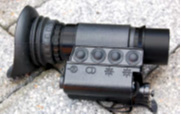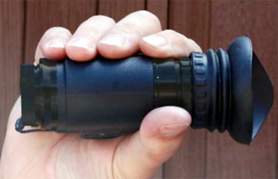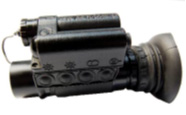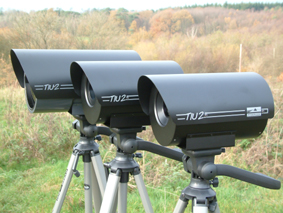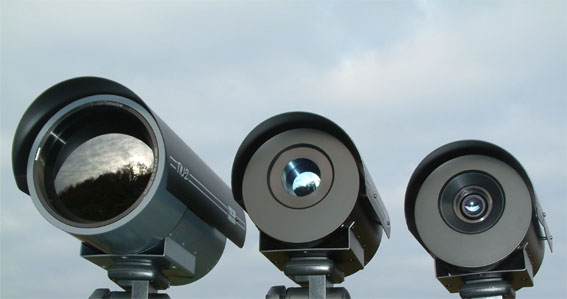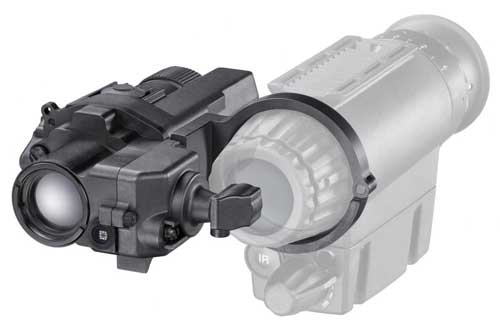Home » PRODUCTS » Thermal Imaging
Thermal Imaging
|
Thermal Imaging – which is also referred to as TIC (Thermal Imaging Camera) & ‘Infrared Cameras’ are typically utilised within Defence, Law Enforcement & Fire Fighting scenarios where the end-user is required to operate in very-low to no-light lighting conditions. Unlike Night Vision that amplifies existing ambient light by the use of an Image Intensifier Tube contained within a Night Vision Device, Thermal Imaging utilises a Thermal Core that detects the heat signature of the target. A Thermal Imaging Device detects the infrared radiation emitted by the object, thus creating an electronic Image. Since Thermal Imagers don’t rely on ambient light like Night Vision, the Thermal Imager is totally ambient light independent. Thermal Imager’s utilise the detection of the target’s heat signature… Thermal Imaging allows detection through fog, haze & smoke. With Thermal Imaging, targets stand out as they’re warmer or colder than the background they are viewed against (referred to as a thermal signature or footprint). This contrast is the ‘thermal image’ displayed on a display. Thermal Imaging technology falls into two categories –
Unlike Night Vision which has the characteristic ‘green’ image, Thermal Imaging is typically black & white or white & black when the polarity is reversed (although some kit utilise software to provide colour images, allowing easier differentiation of the different temperatures variances). Thermal Imaging operates predominantly in 2 wavelength bands – -Types of surveillance Thermal Imaging variations include, but are not limited to: - Thermal Imaging Cameras - Clip on Thermal Imagers Some common terms used in Thermal Imaging are - Ambient Temperature The temperature of immediate air and environment, which can influence the heat transfers around the object. Most temperature indicators on thermal imagers don’t measure ambient air temperatures. Amorphous Silicon Material used to create infrared detectors. Background Noise The naturally present noise in an thermal detector, independent of the ambient temperature or signal strength. This is typically masked by software, but occasionally appears as image graininess in very bland sections. Bolometer A temperature determining instrument utilising a strip thermistor to achieve greater sensitivity than a basic thermistor. Dissimilar to thermistors which are used for contact temperature measurements, bolometers are used to measure radiation levels. Calibration The process of regulating an instrument to read accurately under specific conditions. Chopper Wheel A small wheel in front of a BST-based infrared detector that rotates rapidly. The wheel has a spiral cut out that to a degree blocks different parts of the detector temporarily. This method generates fluctuation in the amount of infrared energy getting to the detector, allowing it to generate an accurate thermal image. Detector (Infrared) The chip or wafer that senses infrared energy. Electromagnetic Radiation The field effects emitted by advancing a charged particle in a magnetic field. Dependant on field speed and strength of acceleration, many types of electromagnetic radiation are created. Emissivity Emission The capability of an object to absorb & radiate infrared energy. High emissivity ratings are indicatively good absorbers of infrared energy. Far Infrared The longest wavelength of infrared radiation, measured as approximately 8μm to 14μm. Similarly referred to as Long Wave Infrared. FoV (Field of View) The total visible field, measured as an angle, as seen when viewed by a thermal imager. Narrower FOVs generate more realistic images and are used a greater distances, whilst wider FOV’s provide broader image on the display. Array (FPA) The actual infrared detector, usually a thin wafer or around 2cm’s. Frequency The amount of cycles an operation performs per period of time. The unit of measurement normally for frequency is Hertz (Hz), or cycles per second. Infrared (IR) Electromagnetic radiation in the band from 0.7μm to 100μm. infrared radiation is between the visible spectrum and microwave radiation. Long Wave Infrared (LWIR) The longest wavelength of infrared radiation, measured as roughly 8μm to 14 μm. Also known to as Far Infrared. Microbolometer A kind of infrared detector that is able of measuring energy levels on each pixel of the FPA. Surface temperature measurement can be taken directly from a microbolometer’s FPA. Micron (micrometre) (abbreviated as μm) The metric measurement equal to one-millionth of a metre. Mid Infrared (or Mid-wave Infrared, MWIR) Infrared radiation with wavelengths of roughly 3μm to 8μm. Near Infrared The shortest infrared radiation wavelength, measuring approximately 1μm to 3μm. Also referred to as Short Wave Infrared. Pixel (Picture element) The smallest in memory or location size on a display. FPA is measured in pixels, with each pixel generating a small quota of the thermal image. Radiation Heat transmission of energy in the form of electromagnetic waves. Reflectance (Reflectivity) Amount of total infrared radiation reflected by a surface. Saturation The point at which a pixel or FPA can’t register any additional infrared radiation. Saturated pixels are spontaneously displayed as the hottest indicator (white, red, etc). Additionally defined as the form in which a further increase in infrared radiation creates no further increase in the displayed image. Shutter Small device that continually obstructs the FPA in a microbolometer thermal imager. The shutter shields the FPA, stopping infrared energy from reaching the detector. Whilst the FPA is covered, the thermal imager authenticates it’s calibrations. Transmissivity (Transmittance) The measurement of the capacity of a material to pass radiation from one side to the other without reflecting or absorbing it. Infrared transmittance for most materials is close to zero, thus absorption/emissivity and reflectivity are typically inverse values. μm Microns Vanadium Oxide A material utilised to create infrared detectors. Wavelength The space between two peaks of an energy wave cycle. Very long wavelengths can be measured in Hz (Hertz), or how frequently peaks occur per second. White Out A state that troubled older infrared detectors. When detectors were exposed to strong infrared sources, the thermal imager would generate entirely white images on the display. Occasionally this was intended in an effort to shield the detector from damage; sometimes it showed damage to the detector. Modern thermal imagers don’t white out; they may experience saturation. Thermal Imaging can be utilised in a myriad of applications such as –
|
|


